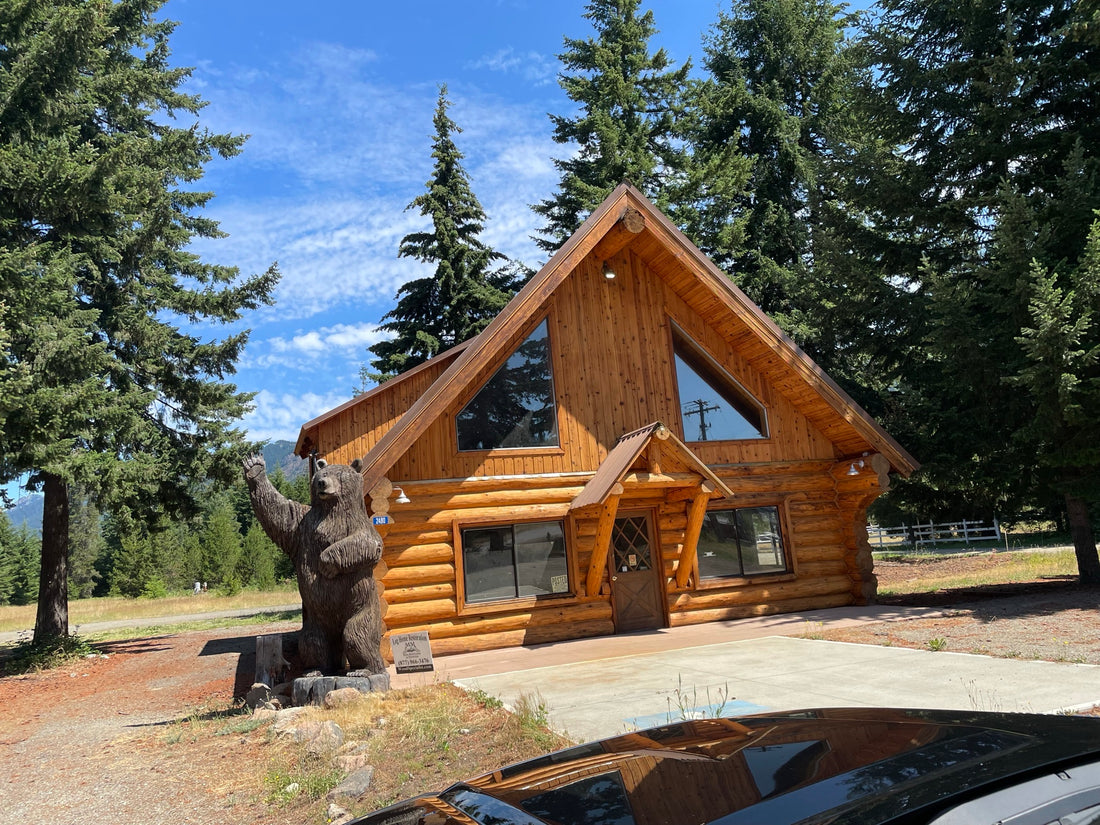
HOW TO STAIN AND SEAL A LOG HOME LIKE A PROFESSIONAL
Share
How to Stain/Seal a Log Home Like a Professional
You deserve a lustrous and clean log home or cabin. If your log home is losing its exterior shine and turning a less appealing shade of gray (or black) – or if its stain is beginning to peel or chip away – then it is time to take action. That's because the change in your log home's appearance isn't merely cosmetic, stain degradation indicates that a log home is no longer protected against the elements!
Although it can provide protection against moisture, discoloration and ultraviolet light, stain is not enough on its own to fully safeguard a log home's exterior. It is the sealer which fully guards against harmful moisture, insects, mold, mildew and rot. Sometimes, prior to stain application, it may be necessary to apply preventative measures (such as borate wood preservative) may be necessary to prevent the insects from destroying your log home's exterior.
Make certain you purchase an appropriate stain and sealer for your log home's wood before you proceed to seal it. With that, here are the steps you should follow.
Prepare the House
Before you apply new stain to a log home, you must remove the old stain. Omitting this step will prevent the new stain from penetrating the wood, thus rendering the entire project ineffective.
Do not use a sanders to remove the old stain. These devices are incapable of accessing the insides of log checks, areas between logs, log corners, and can be too extreme trying to remove old stain (can create flat spots, or remove hand peeled finishes). Other professional methods of stain removal, such as blasting at high air pressure using crushed corn cob grit or crushed walnut shells can do a good job of removing old stain it can be difficult for a homeowner to take on such an endeavor with no experience.
Media blasting is the most thorough method of removing old stain off a log home's surface. Alternatively, pressure washing using a high quality wood cleaner and wood brightener system is typically sufficient to remove most penetrating stains on the market, but some film forming base coat/clear coat systems definitely require these methods.
Sanding is a necessary step following blasting or power washing a log home’s exterior surface. The preparation of the wood is crucial for excellent results from your selected log home stain.
Whichever method you use, ensure that your log home's exterior surface is completely free of dirt and debris, has been sanded and blown off before continuing to the next step.
Inspect for Damage
Once your log home's exterior is no longer darkened by stain, take the opportunity to thoroughly inspect it for rot, cracks, insect holes, and other signs of damage. Repairing rotting logs is a somewhat involved process which normally entails removing damaged sections of logs and replacing them with new log veneers or full log replacements. See a professional log home maintenance company like MM Wood Restoration and Protection for these types of repairs.
Filling in cracks and insect holes is more straightforward, and typically only requires backer rod and a high quality polymer sealant.
Take special care to inspect for spiral checks, which begin on the exterior of the log and encircle it. A spiral check may create a draft, carry water into a corner joint, as well as allow insects to access the home's interior.
Apply the Stain
This is when the real fun begins. Once you have picked the best stain for your log home, use an oversized stain brush or airless sprayer to apply a uniform coat to its exterior. Regardless of your application method, ensure that you work the stain deeply into the logs' checks and crevices.
Stain typically takes 24 to 48 hours to dry fully, but you need only wait about two to four hours to apply a second coat of stain over the first. Note that different log home stains may come with different application instructions; consult and follow them closely to achieve the best results.
Depending on its type, a stain & sealer won't fully dry until 24 to 48 hours have passed. Avoid letting anything brush against your log home for two days after the final step, and presto – you have sealed it just like a professional!
At Lovitt's Coatings, we understand that picking the ideal stain/sealer for your log home or cabin can be a confusing process. But it doesn't have to be. Contact us today and our friendly and knowledgeable team will make certain you have the products that ensure total success!
